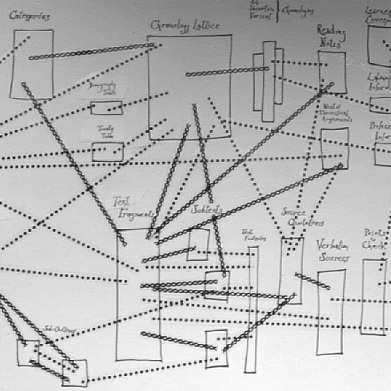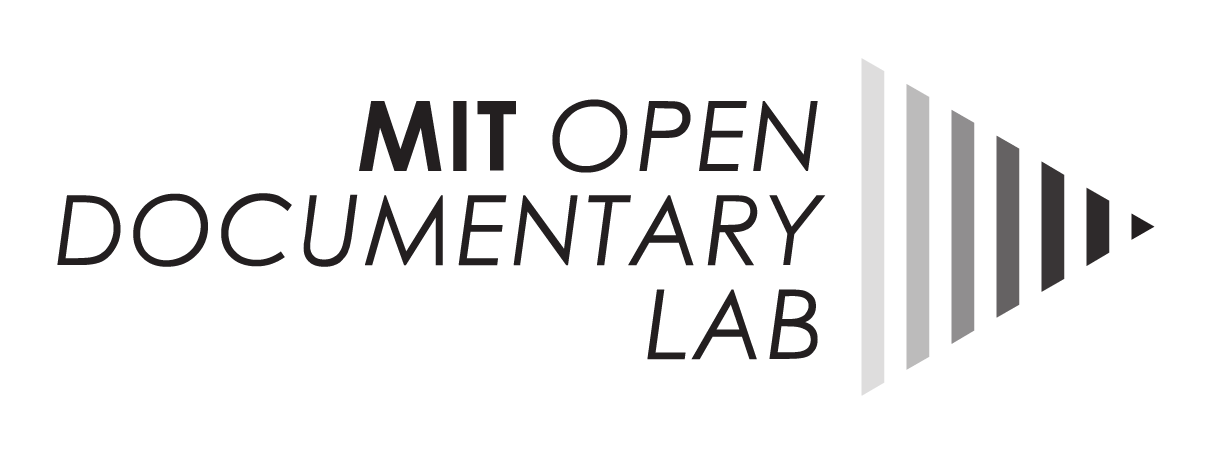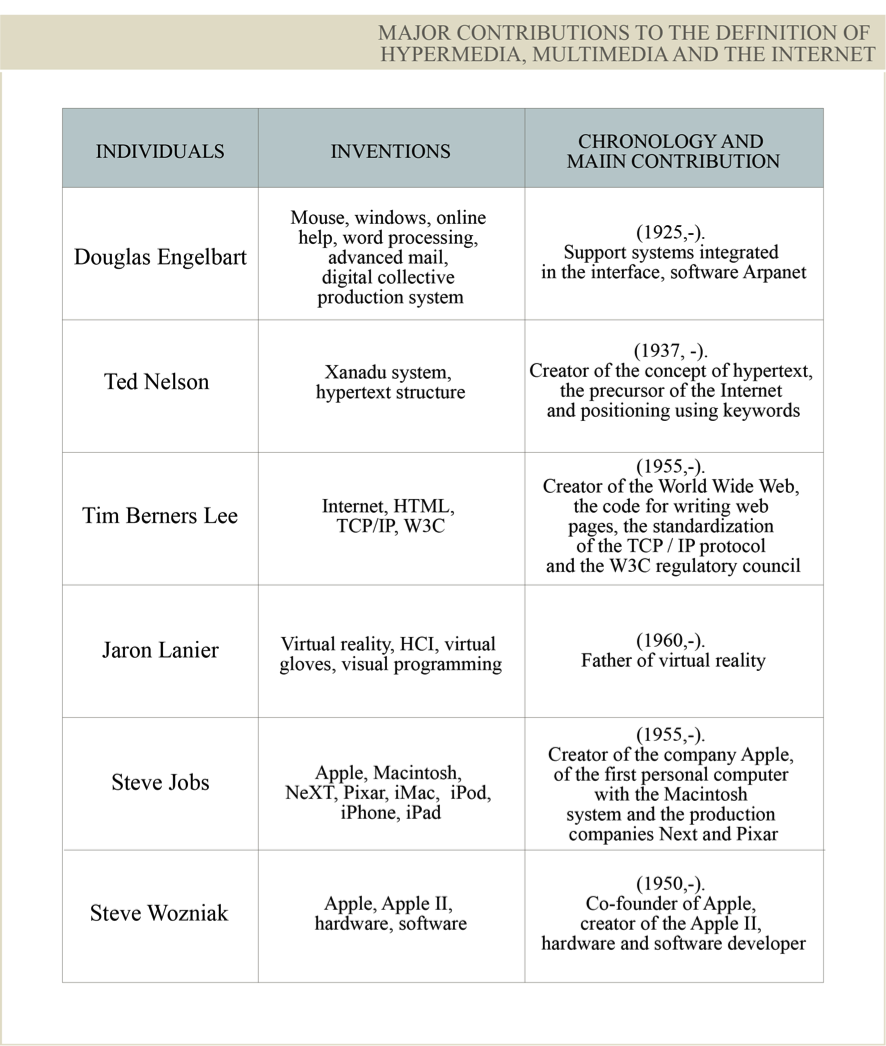
20 Jun Research Forum | Arnau Gifreu Castells on Documentaries and Digital Media, Part 3
The Open Documentary Lab is pleased to announce the Research Forum, a space for researchers to voice their opinions and test new theories. As part of our mission to promote the exchange of ideas about the new arts of documentary, we hope to encourage academic discussion and debate about these emerging forms by creating a place where researchers can develop ideas and interact with the field. The views presented here belong to their authors, and will necessarily take different forms. In the spirit of the documentaries we study, we look forward to community collaboration and exchange as the ideas explored in the Research Forum take root, grow and support the development of the field.
Combined evolution of the documentary genre and interactive media: towards the interactive documentary
Introduction: the documentary genre and the digital media (III)
by Arnau Gifreu Castells
In this series we focus on analyzing the two main parts that constitute the interactive documentary field: the documentary genre and interactive media. In these articles we introduce an original combined evolution of the digital and documentary mediums, in which it is interesting to observe that there are some significant coincidences in time between them. Our aim is to link moments of innovation in the documentary genre and storytelling in general with technological experiments, inventions and pioneering concepts in the digital field.
The documentary genre: Theoretical approach
More than half a century ago (in 1948), the World Union of Documentary established the following definition of a documentary:
Documentaries are all methods of recording on celluloid any aspect of reality interpreted either by sincere and justifiable reconstruction, so as to appeal either to reason or emotion, for the purpose of stimulating the desire for, and the widening of human knowledge and understanding, and of truthfully posing problems and their solutions in the spheres of economics, culture, and human relations (quoted in Leon, 1999:63).
We can maintain all the parameters from the definition above, except for the one referring to the recording medium (celluloid). In any event, the evolution of the documentary and its various meanings has not ceased. As Grierson says in Grierson on documentary (1966), the various works within the genre include forms and different intentions of observing reality and organizing the material that has been extracted from it. A more precise definition of the concept is therefore required. Using this approach, Grierson sets out three guiding principles for the documentary. First, he argues that documentary film is a “new and vital art form […] that can photograph the living scene and the living story.” He also argues that the characters and scenes taken from reality provide better opportunities for interpreting the modern world. Finally, he considers that the material taken from the world can reflect the essence of reality, capture spontaneous gestures and perform movements. In short, “The documentary is nothing more than a creative treatment of actuality. The editing of sequences must therefore include not only description and rhythm, but also comment and dialogue” (Grierson, 1966:36-37). He also says, with regard to art and poetry:
Realistic documentary, with streets and cities and slums and markets and exchanges and factories, has given itself the job of making poetry when no poet has gone before it, and where no ends, sufficient for the purposes of art, are easily observed. It requires not only taste but also inspiration, which is to say a very notorious, deep-seeing, deep-sympathizing creative effort indeed (Grierson, 1966:37).
He believes that the documentary is a useful, educational and impersonal genre, able to develop a discourse of sobriety, with connotations of authority, seriousness and honesty (Bruzzi, 2000:79). Grierson also makes a distinction between the documentary and other non-fiction discourses based on the production of sequences ordered in time or space, and the construction of a discourse is therefore the basis for its differentiation from other audiovisual forms, which he believes are simpler (Cock, 2009:52).
Paul Rotha (1970:65), the British producer and director, says that documentary is synonymous with “the film of specific interest about scientific, cultural and sociological subjects.” Grierson disagrees with Rotha’s definition and says that scientific or educational films are not strictly documentaries. For Rotha, the documentary is “the use of the film medium to interpret creatively and in social terms the life of the people as it exists in reality” (Rotha, 1970:5). Rotha was a collaborator with Grierson, but also criticized some of his positions. He popularized the term documentary in the academic world of cinema with his book The Film Till Now, published in 1930, in which he refers to the various types of film, and places the documentary film in a different category, which he defines based on its purpose and meaning, as follows (Cock, 2009:52-53):
Documentary defines not subject or style, but approach. It denies neither trained actors nor the advantages of staging. It justifies the use of every known technical artifice to gain its effect on the spectator….To the documentary director the appearance of things and people is only superficial. It is the meaning behind the thing and the significance underlying the person that occupy his attention….Documentary approach to cinema differs from that of story-film not in its disregard for craftsmanship, but in the purpose to which that craftsmanship is put. Documentary is a trade just as carpentry or pot-making. The pot-maker makes pots, and the documentarian documentaries (quoted in Jack, 1989:61).
Michael Renov reminds us in Theorizing Documentary (1993) that the concept of the document and its adjectivization as a documentary have a genealogy that can be linked to historicity, based on the two roots of the term, one from Latin and one from Old French. The original Latin word, docere, means the ability to teach, i.e. the conscious transmission of something that can be learned. The Old French root denotes “evidence or proof”. Renov (1993:21-22) defines the documentary form as “the more or less artful reshaping of the historical world,” in which four modalities or functions may arise, which he calls rhetorical/aesthetic, which make up the documentary text. These are to record, reveal or preserve; to persuade or promote; to analyze or interrogate; and to express.
The standpoint of Bill Nichols in his book Representing Reality. Issues and Concepts in Documentary (1991) has received the most attention from international academia. In this theoretical work, Nichols suggests an open and rather unorthodox definition, based on a multiple perspective. He believes that the documentary is a protean institution, consisting of a corpus of texts, a set of viewers and a community of practitioners and conventional practices that are subject to historical changes. He thereby sees the documentary as a conceptual shift in film theory, as it is not merely defined simply in terms of the argument, the purpose, the form, style and production methods, but instead he defines it by its changing nature as a social construct. For this reason, the social network of production, filming, distribution and promotion are constructed by the concept itself. Bill Nichols says:
A good documentary stimulates discussion about its subject, not itself. This serves as many a documentarist’s motto, but it neglects to indicate how crucial rhetoric and form are to the realization of this goal. Despite such a motto, documentary films raise a rich array of historiographic, legal, philosophic, ethical, political and aesthetic issues […] Rather than one, three definitions of documentary suggest themselves since each definition contributes something distinctive and helps identify different sets of concerns. Let us consider documentary from the point of view of the filmmaker, the text and the viewer (Nichols, 1991:42).
Nichols sets out three criteria for the definition of the documentary, with which he attempts to cover most aspects involved in the complexity of the genre. Each criterion gives rise to a definition that highlights different but complementary meanings.
The first definition, focused on the director’s point of view, considers fiction in terms of control: “One common but misleading way of defining documentary from the point of view of filmmaker is in terms of control: documentary filmmakers exercise less control over their subject than their fictional counterparts do” (Nichols, 1991: 42). As Bordwell and Thompson (1995) argue, it is often possible to distinguish a documentary film from a fiction film based on the degree of control exercised during the production. While in fiction almost all the factors are controlled down to the smallest detail, the director of a documentary film only controls a few variables in the preparation, filming and editing. However, what is ultimately uncontrollable by the filmmaker is his subject, which is of necessity part of the story. As Nichols says, “by addressing the historical domain, the documentarist is in a similar position to other practitioners who lack control over what they do: social scientists, physicians, politicians, entrepreneurs, engineers and revolutionaries.”
The second area of definition refers to the text. We will assume that the documentary genre is a film genre like any other. The films included in this genre have some common characteristics. As Nichols says:
Each film establishes internal norms or structures of its own but these frequently share common traits with the textual system or organizing pattern of other documentaries. Documentaries take shape around an informing logic. The economy of the logic requires a representation, case or argument about the historical world. The economy is basically instrumental or pragmatic: it operates in terms of problem-solving. A paradigmatic structure for documentary would involve the establishment of an issue or problem, the presentation of the background to the problem, followed by an examination of its current extent or complexity, often including more than one perspective or point of view. This would lead to a concluding section where a solution or path toward a solution is introduced (Nichols, 1991:48).
Nichols also mentions that the structure of the documentary text has parallels with other texts. These parallels occur at various levels: they may belong to a movement, period, style or form. If the documentary is considered as a genre, the subdivisions within the documentary may have other names.
His third definition concerns the relationship between the documentary and receiver, i.e. the figure of the viewer. He says that viewers develop skills based on an understanding and interpretation of the process that enables them to understand the film. These procedures are a type of methodical knowledge, derived from an active process of deduction, based on prior knowledge and the text itself:
This knowledge would encompass such things as recognizing the picture of Martin Luther King, Jr. as the likeness of a historical figure, understanding that social dislocations can be unified by an argument, assuming that social actors do not conduct themselves solely at the behest of the filmmaker, and hypothesizing the presentation of a solution once a problem begins to be described (Nichols, 1991:55).
In his work Blurred Boundaries. Question of meaning in contemporary culture (1994), Nichols summarizes the current state of the documentary as follows:
Traditionally, the word documentary has suggested fullness and completion, knowledge and fact, explanations of the social world and its motivating mechanisms. More recently, though, documentary has come to suggest incompleteness and uncertainty, recollection and impression, images of personal worlds and their subjective construction (Nichols, 1994:1).
Hypermedia, multimedia and the case of the Internet
The term multimedia has been applied for many years to the simple juxtaposition of different sensory channels in an integrated project. For example, products such as a language course based on text booklets, television programs and voice tapes, projections that synchronize the images of several slide projectors and several audio channels and theatre performances that include originally unrelated elements, such as static or cinematographic projections, etc. are described as multimedia. In the context that concerns us here, “multimedia is a concept that arises from the common digitization and integration resulting in a single computer medium of text, audio, graphics, photographs and animated images. We deliberately omit other sensory stimuli that impossible to represent using a conventional computer with monitor and speakers.” (Ribas, 2000:37)
According to the definition provided by Wikipedia, Multimedia is a system that uses more than one medium at the same time during the presentation of information, such as text, images, animation, video and sound. This concept is as old as human communication, as for example, during normal conversation we speak (sound), write (text), we look at the person we are speaking to (video) and we make gestures and movements with our hands (animation). With the rise of multimedia applications for computers, this word has become part of everyday language. When a computer program, a document or a presentation combines the resources properly, it significantly improves attention, learning and understanding, as it more closely resembles our normal way of communicating as human beings, by using various ways to understand an object or concept.
One way of managing this multimedia information is hypertext. In hypertext, nodes are often physically the same as computer files, or at least a part of their contents. Following on from the statement that the interactive program is unimedial, Ribas (2000:37) says that “the homogeneity created by digitalization in the treatment of various media means that in a network linking computer files, what the digital content of those files represents is in principle structurally irrelevant.” We can therefore define a hypermedia as “a network of interconnected pieces of multimedia information.”
Most authors tend to use the terms hypertext and hypermedia interchangeably. It is precisely this homogeneity between that is George P. Landow’s grounds for justifying this synonymy:
Since hypertext, which links one passage of verbal discourse to images, maps, diagrams, and sound as easily as to another verbal passage, expands the notion of text beyond the solely verbal, I do not distinguish between hypertext and hypermedia (Landow, 1995:15).
And in his subsequent revision of the text, he adds (2005):
The expression hypermedia simply extends the notion of text in hypertext by including visual information, sounds, animation and other forms of data […]. Hypertext denotes an information medium that links verbal and nonverbal information. In this network, I shall use the terms hypermedia and hypertext interchangeably (Landow, 2005:25).
Hypermedia is the term used to designate a set of methods or procedures for writing, designing or measuring content that contains text, video, audio, maps or other media, and can also interact with users. An image with text and hyperlinks is an example of hypermedia. One of the first hypermedia systems to be created was the Aspen Movie Map . The hypermedia approach of these contents places them above all in the categories of human media for communication and interaction. A hypermedia space is an area with no physical dimensions, which hosts, reinforces and structures the activities of individuals. In specific contexts, hypermedia is identified as an extension of the term hypertext, in which audio, video, text and hyperlinks that are generally not sequential are interwoven to form a continuum of information, which can be considered virtually infinite. Taking the reflections of Josep Blat as his starting point, Ribas makes a distinction between a hypermedia application and a hypermedia system:
Following Josep Blat (Blat, 2000) we will define a hypermedia application as a specific network of interconnected multimedia information. However, we will normally consider a hypermedia system to be a tool that can be used to create applications, among other things (Ribas, 2000:38).
The use of multimedia techniques facilitated the development of hypertext, a way to link topics using words in texts, thereby enabling access to specific topics of interest in one or more documents without having to read them completely, merely by clicking the mouse on highlighted words (underlined or in a different color) related to the search. The program immediately displays other documents on the screen that include text related to this word. It is even possible to add bookmarks. The order of reading and the appearance of data on screen are thus controlled, in a similar way to the way in which we relate thoughts, in which the brain responds to a free association of ideas, and not in a single linear way.
However, interactive links are not only limited to texts. They can also interact with sounds, animation and Internet services related to the subject being searched, which has given rise to the new concept called hypermedia, resulting from the fusion of the concepts of hypertext and multimedia. It is possible to conceive of hypermedia systems in terms of the organization of textual, graphic and sound information by means of links that create associations between related information within the system.
Multimedia content can be divided into two categories: linear and nonlinear content. Linear content involves the user having no control over the navigation, as in a film; nonlinear content provides interactivity for the user, who can control the progression, as in the case of a video game. It is also known as hypermedia content.
The evolution of the Internet
The Internet is a vast network of interconnected computer networks, which enables the sharing of information, programs, sending messages, etc.., regardless of the location of its users. This entire telecommunications revolution began in the 1960s, with the ideas of J.C.R. Licklider mentioned above.
As Manuel Castells noted in his speech entitled “The Internet and the Network Society” during the opening session of the doctoral program on the information and knowledge society at the Open University of Catalonia in 1999:
The Internet refers to the global information system that is logically linked together by a globally unique address space based on the Internet Protocol (IP) or its subsequent extensions/follow-ons and is able to support communications using the Transmission Control Protocol/Internet Protocol (TCP/IP) suite or its subsequent extensions/follow-ons, and/or other IP-compatible protocols; and provides, uses or makes accessible, either publicly or privately, high level services layered on the communications and related infrastructure described herein (Castells, 1999).
The origins of the Internet lie in a project of the United States Army, which created a communications system to interconnect its computers. The main objectives were to be able to simultaneously access specific information in different parts of the country, and to prevent a possible attack from knocking out the military telecommunications network. This led to the creation of the ARPANET (the Advanced Research Projects Agency Network), the first communications network. It was a system of nodes connected to a single system, so that even if one link was destroyed, it could use another circuit (another link as a possible alternative) to reach the correct destination. The information travelled in packets (pieces of messages), a fragmentation system that guarantees the information’s arrival using a protocol called TCP/IP (Transmission Control Protocol – Internet Protocol). ARPANET subsequently ceased to be of interest as a strategic instrument for war or any other governmental interests, and instead promoted the development of means for sharing technical and human resources oriented towards scientific research. After several universities such as UCLA and the Massachusetts Institute of Technology (MIT) became involved, the project was named INTERNET. There were a million users in the world in 1989, 100 million ten years later, and the increase today is exponential. The milestones in the history of the Internet are:
1962: J.C.R. Licklider proposes the first idea of interconnection between different computers for sharing any information.
1969: Four American universities (UCLA, Santa Barbara, Utah and the Stanford Research Institute) create the first ARPANET connection.
1973-1977: The basic technological concepts for establishing the first ARPANET international connection between an English and a Norwegian institution are developed.
1982-1987: The creation of the common Internet language and protocol: TCP/IP, by Bob Kahn and Vint Cerf.
1991: Appearance of the World Wide Web, which allows images, text and sound to be combined in one document.
1994: The Netscape Navigator browser is launched onto the market. These programs enable viewing and browsing of web pages and their links.
2004: The concept of Web 2.0 or collaborative platforms appears.
The following individuals and their specific contributions to the medium should be mentioned as regards the concepts of multimedia, hypermedia and the creation of the Internet: Douglas Engelbart, Ted Nelson, Jaron Lanier, Tim Berners Lee, Steve Jobs and Steve Wozniak (see diagram below).
REFERENCES
BLAT, Josep (2000), Sistemes multimèdia / hipermèdia. Barcelona: Universitat Pompeu Fabra.
Available online at: http://www.iua.upf.es/~jblat/material/doctorat/introduction.html
BRUZZI, Stella (2000), New Documentary: a critical introduction. New York: Routledge.
COCK , Alejandro (2009), Retóricas del cine de ficción postvérité. Ampliación de las fronteras discursivas audiovisuales para un espíritu de época complejo. [Doctoral Thesis] Bellaterra: Universitat Autònoma de Barcelona.
GRIERSON, John; HARDY, Forsyth (1966), Grierson on documentary. London: Forsyth Hardy Faber.
LANDOW, George P. (1995), Hipertexto. Barcelona: Paidós.
— (2005), Hipertexto 3.0: teoría crítica y nuevos medios en la era de la globalización. Barcelona: Paidós.
LEÓN, Bienvenido (1999), El documental de divulgación científica. Barcelona: Paidós.
NICHOLS, Bill (1991), La representación de la realidad: Cuestiones y Conceptos sobre el Documental. Barcelona: Paidós.
— (1994), Blurred Boundaries. Question of meaning in contemporary culture. Bloomington, Indianapolis: Indiana University Press.
RENOV, Michael (1993), Theorizing Documentary. New York: Routledge.
RIBAS, Joan I. (2000), Caracterització dels interactius multimèdia de difusió cultural. Aproximació a un tractament específic, els “assaigs interactius” [research work], Barcelona: Universitat Pompeu Fabra. Facultat de Comunicació.
ROTHA, Paul (1970), Documentary Film. Nueva York: Hasting House Publishers.




